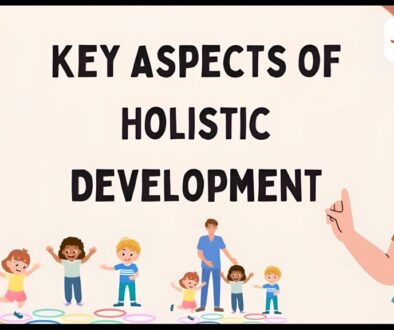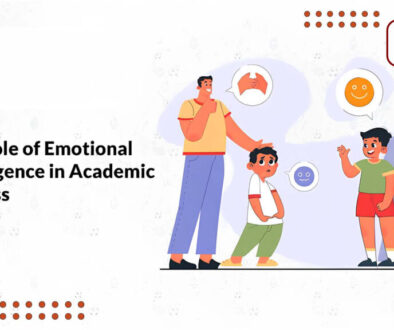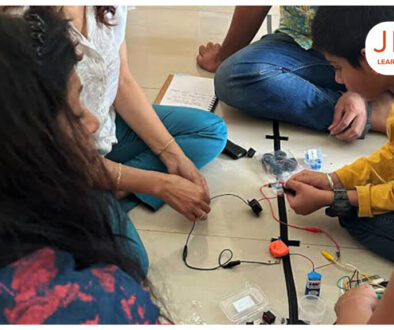Every Child is Unique: Embracing Individuality for a Brighter Future
Every child is unique. While some people thrive in science, others love the arts, and still others are excellent athletes. Every child is different in their personality, learning style, and rate of development. Our systems, however, frequently treat them all the same and demand consistent results. This can hinder children’s creativity, cause stress, and keep them from realising their full potential.
In this blog, let’s explore why every child’s uniqueness matters, how we can support it, and what happens when we celebrate individuality.
The Beauty of Being Different
Children are like fingerprints—no two are the same. They have a range of interests. Process the world differently and grow up in different environments. There are kids who are born leaders and kids who would rather work in the background. While some people learn best by reading, others require practical experience.
Recognising these differences isn’t just kind—it’s essential. When we treat every child as special, we unlock their full potential.
Problems with a “One-Size-Fits-All” System
Unfortunately, traditional education often ignores these differences. Schools focus on grades, standardised tests, and a narrow definition of success. This creates several problems:
- Lost Potential: Children who aren’t suited to the system, such as creative thinkers or hands-on learners, may feel less smart than they actually are. Frequently their abilities are hidden.
- Stress and Burnout: Children experience stress and frustration when they are pressured to perform well in areas they find difficult or when they are compared to others.
- Low Confidence: When a child is told they are not good enough because they don’t fit into a certain mold, they may lose confidence and give up completely.
How to Support Every Child’s Uniqueness
We must accept and value children’s differences if we are to genuinely aid in their development. Here’s how we can do that:
- Recognise Learning Styles
Children learn in different ways:
– Visual learners need pictures, diagrams, or videos.
– Auditory learners absorb information by listening to lectures or discussions.
– Kinesthetic learners do best when they can touch and interact with things.
We make education enjoyable and productive for everyone by adapting our teaching methods to these learning preferences.
- Encourage Exploration
Give children the opportunity to try new things like volunteering, painting, coding, and playing an instrument. They learn more about their strengths and passions as a result. For instance, a child who has trouble with math may be an excellent artist or a born leader.
- Avoid Comparisons
Each kid develops at their own rate. It only puts pressure on children to compare themselves to their classmates, siblings, or other people. Encourage them to be their best selves and instead concentrate on their personal development.
- Build Emotional Support
While some children are extroverted, others are shy. Some struggle with issues like learning disabilities or anxiety. Children feel safer and more appreciated when they receive emotional support in the form of kindness, patience, and encouragement.
- Celebrate All Kinds of Success
It takes more than grades to succeed. It also involves cooperation, ingenuity, compassion, and fortitude. When we acknowledge and value these attributes, kids discover that their value is independent of their test results.
Real-Life Examples of Unique Success
Albert Einstein
Due to his academic struggles, Einstein was even suspected of having learning disabilities. However, he developed into one of history’s brightest minds. Allowing him to think in a different way led to the emergence of his genius.
Temple Grandin
After receiving an autism diagnosis, Temple Grandin encountered numerous difficulties. But because of her distinct viewpoint, she was able to transform animal welfare and rise to prominence as a scientist and activist.
The Role of Parents and Teachers
Parents and teachers play the biggest role in supporting a child’s unique journey.
For Parents
– Let your child explore their interests without pushing them into activities they don’t enjoy.
– Celebrate their small victories, whether it’s learning a new word or scoring a goal in soccer.
– Be patient with their challenges. Every child has strengths and weaknesses.
For Teachers
– Use creative teaching methods that work for different learners.
– Avoid labeling kids as “good” or “bad” students. Instead, focus on helping them grow.
– Encourage group activities where children can learn from each other’s strengths.
Why Celebrating Differences Matters
When we accept and celebrate every child’s uniqueness, amazing things happen:
– Confidence Grows: Kids feel proud of who they are.
– Learning Becomes Fun: When education aligns with their interests and abilities, children
enjoy it more.
Future Leaders Emerge: Diverse talents lead to innovation, creativity, and problem-solving.
Conclusion
Each child is unique, which is a wonderful thing. Treating every child as an individual allows us to help them identify their strengths, overcome obstacles, and develop into contented, self-assured adults. Let’s create an environment where children can thrive in their own unique ways and be themselves. After all, the best way to prepare for the future is to nurture the unique brilliance in every child today.




